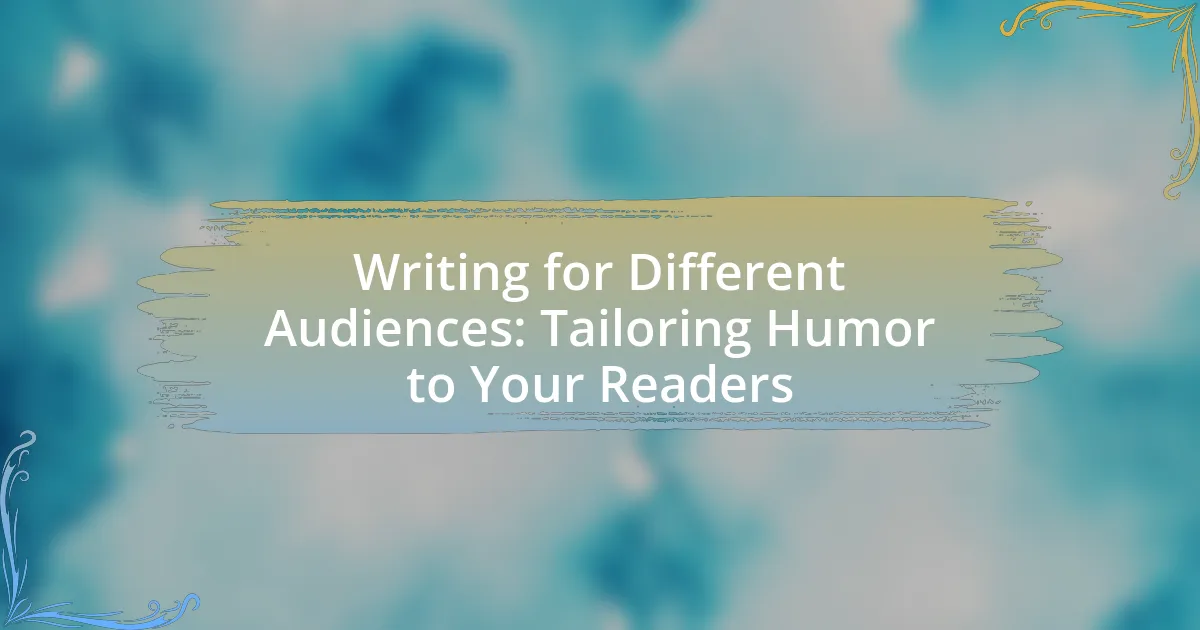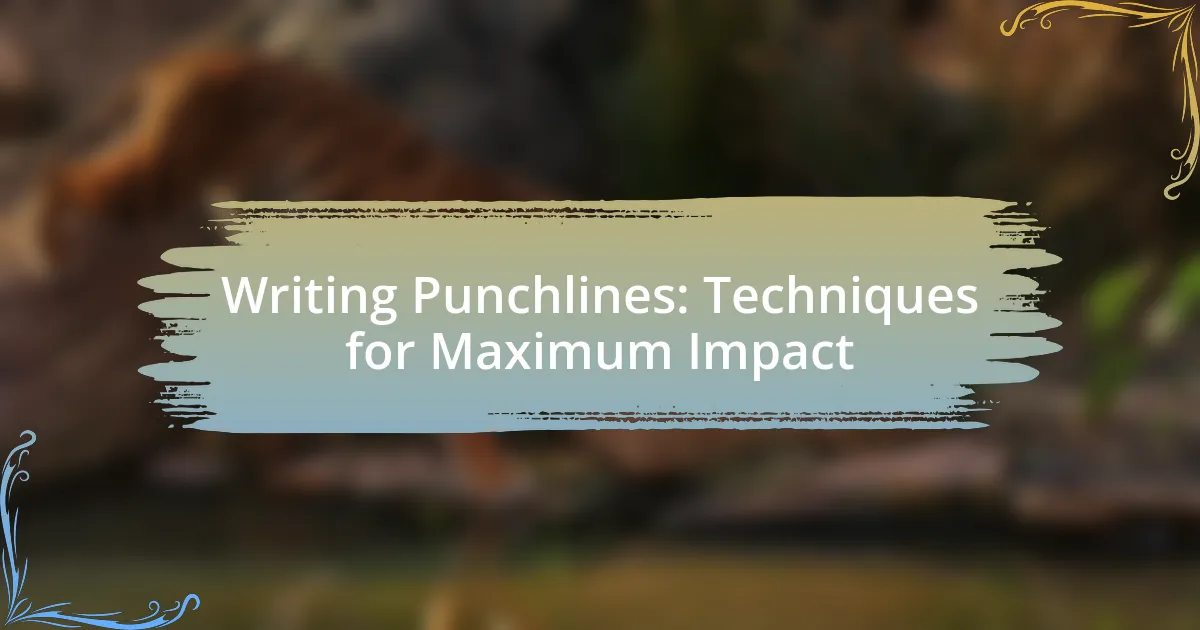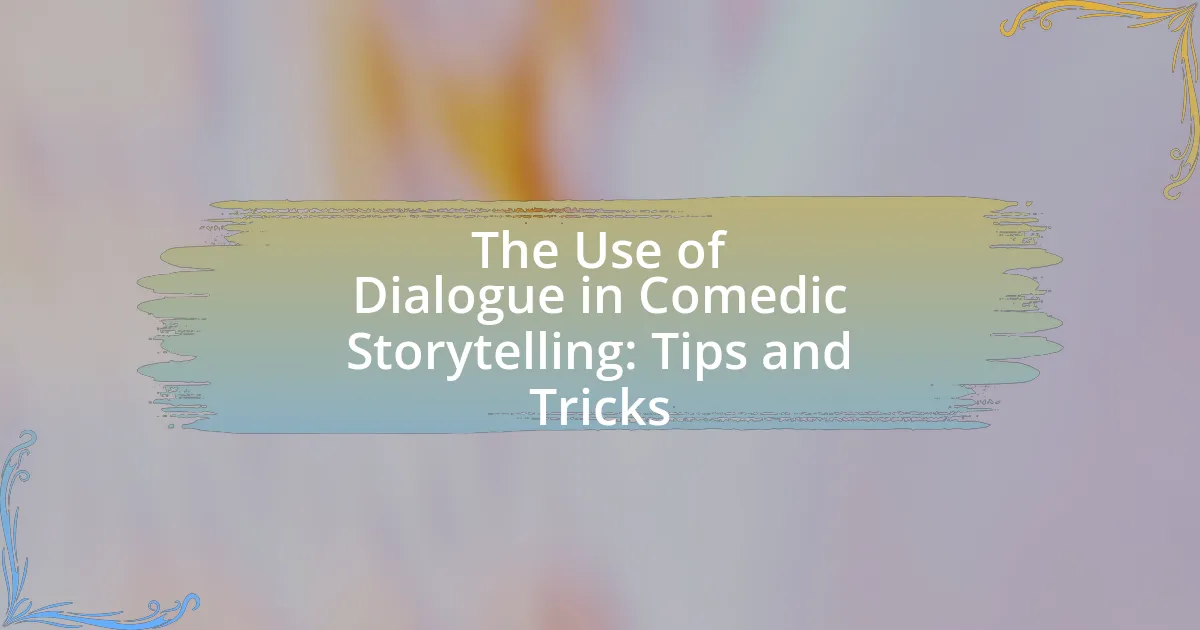The article explores the science of laughter, examining its psychological and physiological mechanisms, including the release of endorphins and its role in social bonding. It defines laughter as a complex response involving various brain regions and highlights its cultural variations in expression and interpretation. The article also discusses the elements that contribute to humor in storytelling, such as timing, surprise, and relatability, and provides practical tips for enhancing comedic writing. Additionally, it addresses how personal experiences and psychological theories influence humor appreciation, offering resources for aspiring humor writers to refine their skills.
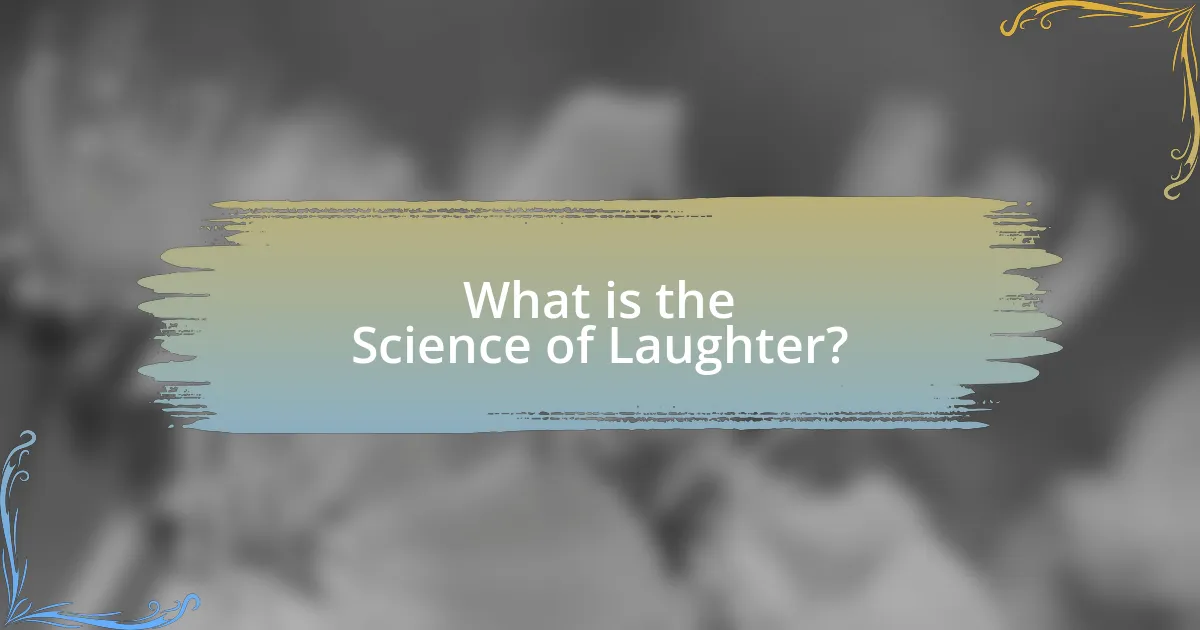
What is the Science of Laughter?
The science of laughter examines the psychological and physiological mechanisms behind laughter and humor. Research indicates that laughter triggers the release of endorphins, which are chemicals in the brain that promote feelings of happiness and reduce stress. A study published in the journal “Neuroscience & Biobehavioral Reviews” by Robert Provine highlights that laughter is a social behavior that fosters bonding and communication among individuals. Additionally, laughter activates multiple areas of the brain, including those responsible for emotional processing and social cognition, demonstrating its complex role in human interaction and well-being.
How do scientists define laughter?
Scientists define laughter as a complex physiological and psychological response characterized by rhythmic vocalizations, facial expressions, and bodily movements, typically triggered by humor or social interactions. This response involves the activation of multiple brain regions, including the prefrontal cortex, limbic system, and motor cortex, which coordinate the emotional and physical aspects of laughter. Research indicates that laughter serves various functions, such as social bonding and stress relief, highlighting its significance in human communication and emotional well-being.
What physiological responses occur during laughter?
Laughter triggers several physiological responses, including the activation of the diaphragm, increased heart rate, and the release of endorphins. During laughter, the diaphragm contracts and relaxes rapidly, which enhances respiratory function and oxygen intake. This process can lead to an elevated heart rate, promoting blood circulation. Additionally, laughter stimulates the release of endorphins, which are neurotransmitters that create feelings of happiness and reduce stress. Studies have shown that laughter can also lower levels of cortisol, a stress hormone, further contributing to its positive physiological effects.
How does laughter differ across cultures?
Laughter differs across cultures in its expression, interpretation, and social context. For instance, in Western cultures, laughter is often seen as a sign of joy and is frequently used in social interactions to build rapport. In contrast, some Asian cultures may view laughter as a more reserved expression, often used to diffuse tension rather than to openly express happiness. Research by Robert Provine in “Laughter: A Scientific Investigation” highlights that cultural norms shape how laughter is perceived; for example, in Japan, laughter can sometimes be a response to embarrassment, while in the United States, it is more commonly associated with humor and enjoyment. This cultural variation illustrates that laughter is not universally understood but is influenced by societal values and communication styles.
Why is laughter considered a universal language?
Laughter is considered a universal language because it transcends cultural and linguistic barriers, conveying emotions and social signals that are understood globally. Research indicates that laughter activates the brain’s reward system, releasing endorphins and fostering social bonding, which is a fundamental human experience. A study published in the journal “Cognition and Emotion” by authors such as Robert Provine demonstrates that laughter occurs in social contexts and is often a response to humor, indicating its role in communication across diverse cultures.
What role does laughter play in social bonding?
Laughter plays a crucial role in social bonding by fostering connections and enhancing group cohesion. It serves as a non-verbal communication tool that signals safety and promotes trust among individuals. Research indicates that shared laughter can increase feelings of belonging and strengthen interpersonal relationships, as evidenced by a study published in the journal “Emotion,” which found that laughter during social interactions leads to increased cooperation and reduced social anxiety. This demonstrates that laughter not only enhances enjoyment but also solidifies social ties, making it an essential component of human interaction.
How does laughter affect emotional well-being?
Laughter significantly enhances emotional well-being by reducing stress and promoting feelings of happiness. Research indicates that laughter triggers the release of endorphins, the body’s natural feel-good chemicals, which can improve mood and foster a sense of connection with others. A study published in the journal “Psychological Science” by authors such as Robert R. Provine demonstrates that laughter not only alleviates anxiety but also strengthens social bonds, contributing to overall emotional health.
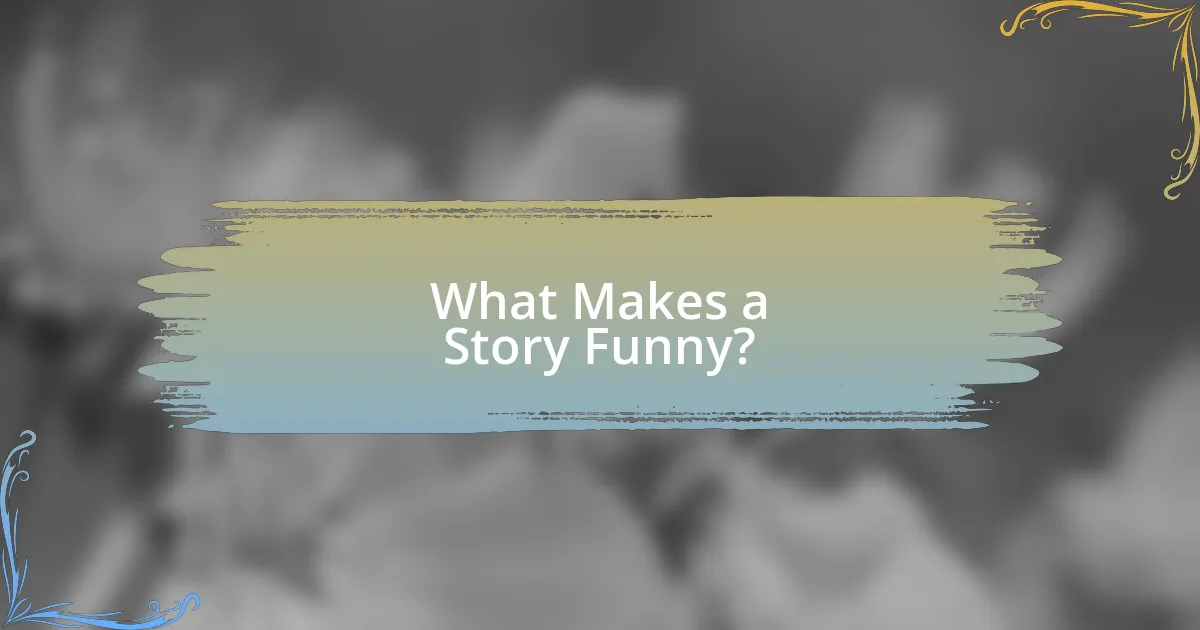
What Makes a Story Funny?
A story is considered funny when it effectively employs elements such as surprise, incongruity, and exaggeration. These elements create a cognitive dissonance that leads to laughter. For instance, a punchline that subverts expectations can trigger humor by presenting an unexpected twist, as demonstrated in studies on humor perception which show that incongruity is a key factor in eliciting laughter. Additionally, exaggeration amplifies situations to absurd levels, making them humorous by highlighting the ridiculousness of a scenario. Research by Richard Wiseman in “The Ascent of Humor” supports this by indicating that humor often arises from the unexpected resolution of a narrative.
What elements contribute to humor in storytelling?
Elements that contribute to humor in storytelling include timing, surprise, relatability, and exaggeration. Timing is crucial as it dictates when a punchline or humorous moment occurs, enhancing its impact. Surprise plays a significant role by subverting expectations, leading to laughter when the outcome is unexpected. Relatability allows audiences to connect with the characters or situations, making the humor more effective. Exaggeration amplifies traits or scenarios to absurd levels, creating a comedic effect. Research by Richard Wiseman in “The Ascent of Laughter” highlights that these elements are consistently found in successful comedic narratives, demonstrating their importance in eliciting laughter.
How does timing influence the effectiveness of a joke?
Timing significantly influences the effectiveness of a joke by determining when the punchline is delivered in relation to the setup. Effective timing creates anticipation and enhances the surprise element, which are crucial for humor. Research indicates that a well-timed punchline can increase laughter by up to 50%, as it aligns with the audience’s cognitive processing and emotional readiness. For instance, comedians often pause before delivering a punchline to build suspense, which primes the audience for the humor, making the joke more impactful.
What is the role of surprise in humor?
Surprise plays a crucial role in humor by creating an unexpected twist that elicits laughter. This element of surprise disrupts the audience’s expectations, leading to a cognitive shift that results in amusement. Research indicates that humor often arises from incongruity, where the resolution of this incongruity through surprise can trigger a positive emotional response. For instance, a study by M. J. Ruch in “The Sense of Humor: Explorations of the Human Condition” highlights that humor relies on the brain’s processing of unexpected information, reinforcing the idea that surprise is fundamental to comedic effectiveness.
Why do different people find different things funny?
Different people find different things funny due to individual differences in personality, cultural background, and life experiences. These factors shape one’s sense of humor, influencing what is perceived as amusing. For instance, research by Peter McGraw and his colleagues in the “Benign Violation Theory” suggests that humor arises when something is simultaneously perceived as a violation of social norms and benign, meaning it is not threatening. This theory highlights how personal context and societal norms affect humor perception. Additionally, studies indicate that humor preferences can vary significantly across cultures, as evidenced by the differences in comedic styles between Western and Eastern societies.
How do personal experiences shape our sense of humor?
Personal experiences significantly shape our sense of humor by influencing what we find relatable or amusing. Individuals often draw from their own life events, cultural background, and social interactions to develop a unique comedic perspective. For instance, research by Peter McGraw and his colleagues in the “Benign Violation Theory” suggests that humor arises when a situation simultaneously violates social norms while being perceived as benign, which is often informed by personal context. This means that experiences such as family dynamics, cultural traditions, and even trauma can dictate the types of humor individuals appreciate or create, leading to a diverse range of comedic styles across different people.
What psychological theories explain variations in humor appreciation?
Psychological theories explaining variations in humor appreciation include the Incongruity Theory, Superiority Theory, and Relief Theory. The Incongruity Theory posits that humor arises from the perception of incongruity between expectations and reality, suggesting that individuals appreciate humor when they encounter unexpected twists or contradictions. Superiority Theory asserts that humor is derived from the feeling of superiority over others, often seen in jokes that highlight the misfortunes or shortcomings of others. Relief Theory, proposed by Sigmund Freud, suggests that humor serves as a mechanism for releasing psychological tension and pent-up emotions, allowing individuals to cope with stress. Research supports these theories, indicating that individual differences in personality traits, cultural background, and cognitive styles significantly influence humor appreciation, as evidenced by studies such as “The Role of Personality in Humor Appreciation” by Martin et al. (2003), which found correlations between personality traits and humor preferences.
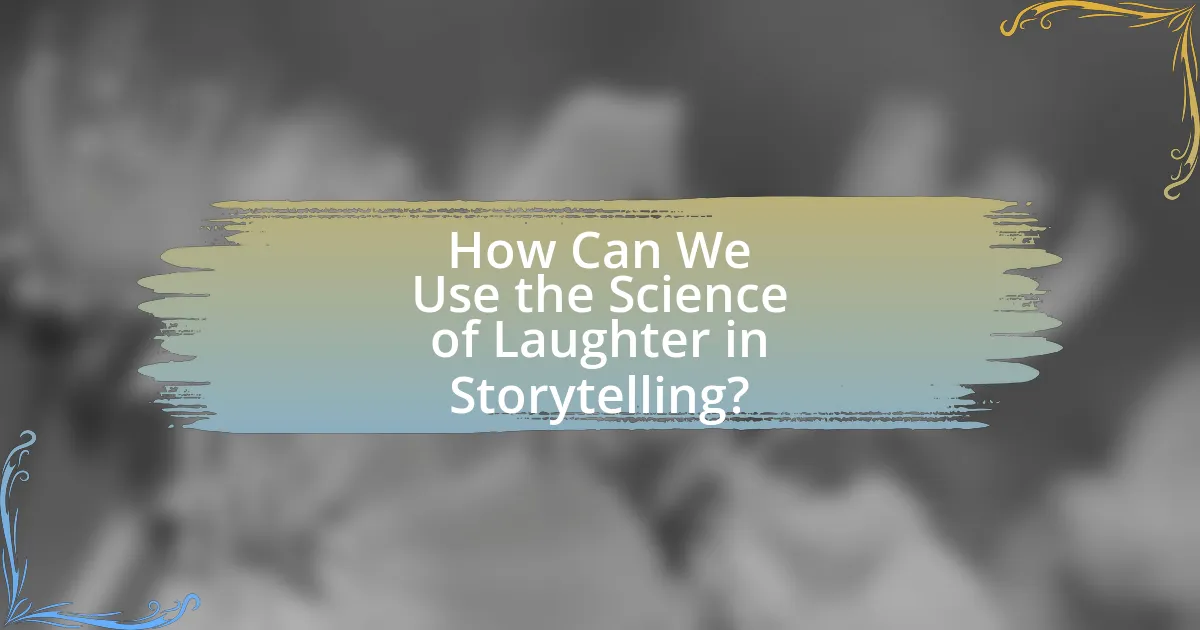
How Can We Use the Science of Laughter in Storytelling?
The science of laughter can be used in storytelling by incorporating elements that trigger humor, such as incongruity, surprise, and timing. Research indicates that laughter activates the brain’s reward system, releasing dopamine, which enhances engagement and retention of the story. For instance, a study published in the journal “Cognitive Processing” by authors such as Robert Provine highlights that humor often arises from unexpected twists in narratives, making the audience more receptive to the overall message. By strategically placing humorous elements, storytellers can create a more memorable and impactful experience for their audience.
What techniques can enhance humor in writing?
Techniques that can enhance humor in writing include the use of wordplay, exaggeration, and timing. Wordplay, such as puns or clever phrasing, creates unexpected connections that can elicit laughter. Exaggeration amplifies characteristics or situations to absurd levels, making them humorous by their sheer improbability. Timing, particularly in the delivery of jokes or punchlines, is crucial; a well-placed pause can heighten anticipation and enhance comedic effect. Research by Peter McGraw and his colleagues in the “Benign Violation Theory” suggests that humor arises when a situation simultaneously violates social norms while still being perceived as benign, indicating that context and delivery are essential for effective humor.
How can writers effectively use punchlines?
Writers can effectively use punchlines by ensuring they create a strong setup that builds anticipation and leads to an unexpected twist. This technique relies on the element of surprise, which is crucial for eliciting laughter. Research indicates that humor often arises from incongruity, where the punchline subverts the audience’s expectations, creating a cognitive shift that results in amusement. For example, a well-crafted punchline can transform a mundane situation into a humorous one by introducing an absurd or clever conclusion that contrasts sharply with the setup.
What are common pitfalls to avoid in humorous storytelling?
Common pitfalls to avoid in humorous storytelling include over-explaining jokes, relying on clichés, and failing to understand the audience’s context. Over-explaining jokes can diminish their impact, as humor often relies on subtlety and timing. Relying on clichés can make the storytelling feel unoriginal and predictable, which can disengage the audience. Additionally, failing to understand the audience’s context, such as cultural references or sensitivities, can lead to humor that misses the mark or offends rather than entertains. These pitfalls can undermine the effectiveness of humor, as evidenced by studies showing that audience engagement is highest when humor is relatable and well-timed.
What practical tips can help improve comedic storytelling?
To improve comedic storytelling, focus on timing, structure, and relatability. Effective timing enhances punchlines, while a clear structure, such as setup and payoff, keeps the audience engaged. Relatable content resonates with listeners, making humor more impactful. Research indicates that well-timed jokes can increase audience laughter by up to 50%, demonstrating the importance of these elements in comedic storytelling.
How can feedback from audiences refine humor in stories?
Feedback from audiences can refine humor in stories by providing insights into what resonates and what falls flat. Audience reactions, such as laughter or silence, serve as immediate indicators of comedic effectiveness, allowing writers to adjust timing, delivery, and content. For instance, studies show that humor is often subjective, and understanding diverse audience perspectives can help creators tailor their material to enhance relatability and impact. By analyzing audience feedback, writers can identify patterns in humor appreciation, leading to more refined and engaging storytelling.
What resources are available for aspiring humor writers?
Aspiring humor writers can access a variety of resources to enhance their skills. Notable resources include books such as “The Comic Toolbox” by John Vorhaus, which provides practical techniques for writing humor, and “Writing Comedy” by John Byrne, which offers insights into comedic structure. Online platforms like MasterClass feature courses from established comedians, allowing writers to learn directly from industry professionals. Additionally, workshops and writing groups, such as those offered by the Humor Writers Association, provide opportunities for feedback and collaboration. These resources collectively support the development of humor writing skills through structured learning and community engagement.



